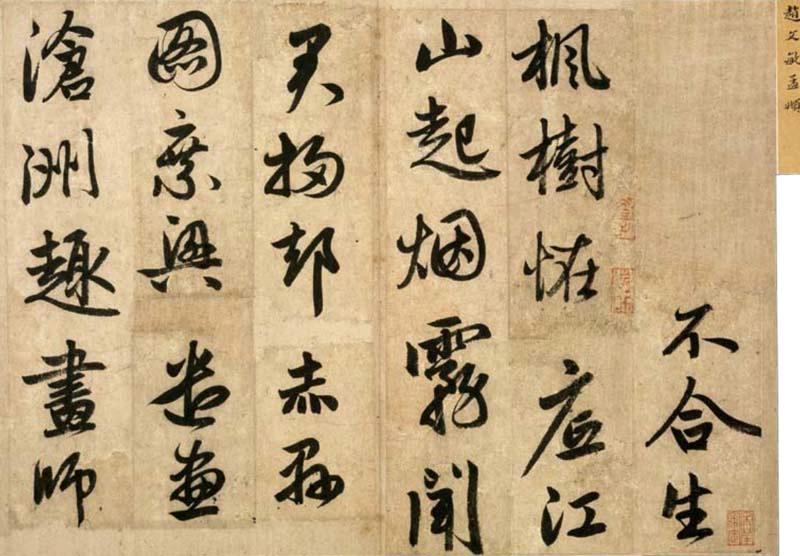Zhao Mengfu:The Spirit of Literati Painting
2015-12-11byLiZhuoxi
by+Li+Zhuoxi
We can never miss Zhao Mengfu (1254-1322) no matter what when studying the history of Chinese painting or that of literati painting.
Born in the imperial clan of the Southern Song Dynasty (1127-1279), Zhao Mengfu was a 11th generation descendant of Zhao Kuangyin, Emperor Taizu of Song. Though his paintings were less well-known than his calligraphy, he did create the style of Chinese landscape painting. As the most famous, leading artist at the beginning of the Yuan Dynasty (1279-1368), he exerted great influence on contemporary artists and critics, and even on artists in the late Yuan Dynasty.
He was best known for his idea of “adopting the essence of ancient works,” which was also the core of his artistic theories. He devoted his life to finding a different style from that of the landscape paintings in the Song Dynasty, which focused more on the plane laying. Like most others in the mainstream, he rejected the complicated and gorgeous style of the late Southern Song Dynasty for its lack of humanistic concern. He emphasized the “pursuit of novelty” via the method of “imitating the past.” His idea on the charm of ancient works was not simply to copy the style of the predecessors, but to create a new style of painting based on the spirit of realistic depiction in landscape and figurative paintings —in order to bring about radical changes in the style prevalent since the Northern Song Dynasty (1127-1279); and, to turn the style from being decorative and trivial to plain and natural.
Zhao Mengfu put forward the idea that “calligraphy and painting are fundamentally similar,” combining calligraphy in paintings, which added to the humanistic appeal and lingering charm of the paintings. Water Village, drawn in his mid-life, was a typical representation of his artistic theory and of the spirit of literati painting. Shan Guoqiang, a researcher from the Palace Museum, said, “He was not painting, but writing calligraphy. Almost all the strokes in Water Village were from Chinese calligraphy.”The whole picture reflected his life-time techniques. He not only improved upon the weaknesses in the early stage, but also eliminated the dramatic or drastic movements, as if he had put aside all thoughts and recovered his original simplicity, which sublimated all else in this painting. He painted solely for the sake of painting, without any consideration of categories, styles or techniques of calligraphy or painting.
This work shows a determination to pursue simplicity and a state of indifference or reclusion, mirroring the artistic conception and spirit of literati painting.
Often, people are more familiar with his accomplishments in calligraphy than in painting. If students of calligraphy want to start from a regular script, they must first and foremost imitate the works of “Four Grand Masters of Regular Script,” namely Yan Zhenqing, Ouyang Xun, Liu Gongquan, and Zhao Mengfu, known for grandness, neatness, moderate build, and gracefulness, respectively. The Precious Collection of the Stone Moat exhibition currently underway in the Palace Museum includes two pieces of Zhaos work: the running scripts The Tale of the Goddess of Luo River and The Thousand Character Classic, both written around the age of 50 when he was at the peak of his calligraphy. He made considerable effort to revolutionize the running script in the Yuan Dynasty.
Zhao Mengfus idea on the charm of ancient works and on the style of literati painting influenced almost entire painting circles in the Yuan Dynasty. His aesthetic tastes greatly impacted the calligraphy circle in the Yuan Dynasty because of the way he had evolved and his high status in the world of calligraphy and painting.